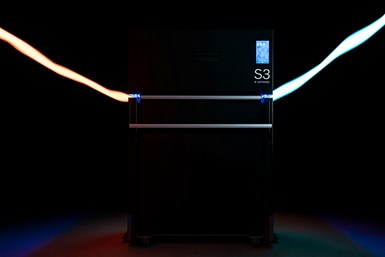Sintratec Adds More Power in S3 Selective Laser Sintering System
Formnext 2022: The system comes with a 30-W fiber laser, which is three times more powerful than the Sintratec S2, resulting in shorter printing times.
Swiss 3D pringing manufacturer Sintratec says its S3 is a selective laser sintering (SLS) system is a high-tech module featuring a laser three times more powerful than the previous generation.
According to the company, the benefit of the S3 is more speed. With a 30-W fiber laser, the fusion module comes with a three times more powerful laser than the Sintratec S2, resulting in significantly shorter printing times.
Sintratec is a Swiss developer and manufacturer of precise 3D printers for professional use. The cost-effective and compact systems employ the SLS technology in order to process high-quality polymer materials. Using the Sinatrec S3, users can create complex objects with a high freedom of design. Whether stiff or flexible, it is said Sintratec materials are highly resilient and temperature-resistant.
It is said these SLS 3D printers are well suited for production, prototyping and research. The S3 generation builds on the qualities of the S2, which is an all-in-one SLS 3D printing solution for small- to mid-sized series production.
The modular SLS production system can be expanded as needed, and is said to easily adapt to users’ needs. The processes of material preparation, printing and depowdering are integrated in a closed and semi-automatic system. The SLS system consists of the Laser Sintering Station (LSS), the Material Core Unit (MCU) and the Material Handling Station (MHS). Together, these modules make up a self-contained process system for additive manufacturing.
Related Content
-
AM 101: What Is Binder Jetting? (Includes Video)
Binder jetting requires no support structures, is accurate and repeatable, and is said to eliminate dimensional distortion problems common in some high-heat 3D technologies. Here is a look at how binder jetting works and its benefits for additive manufacturing.
-
7 Things We Saw at Formnext 2024 — Video Playlist
There were countless processes, applications and announcements at Formnext 2024. Here are seven standouts Peter Zelinski and Stephanie Hendrixson caught on film.
-
Uniformity Labs Qualifies Stainless Steel Powder for Binder Jetting System
The stainless steel powder is qualified on Desktop Metal’s Production System to deliver double the green strength of existing stainless steel powders over the entire build envelope.












